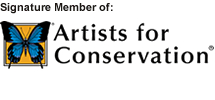 |

     
 

Members
Login
|
|


|
|
| |
Norbert Gramer, Ph.D., born in 1951, started painting and drawing very early, lives in Remagen, a small town located along the river Rhine in Germany.
After completing an early creative and graphic training he studied old masters like René Magritte, Salvador Dalí, Albrecht Dürer, Max Ernst and also modern artists and illustrators.
Besides those art studies he received a diploma degree in Social Education at the College of Düsseldorf and a Ph.D. in Philosophy, New German Literature and Education at the University of Bonn (topic of his dissertation: „Compassion in Ethics. History and Problem of a neglected Principle“).
Since 1970 different solo and group exibitions in Germany and France.
His works are found in both government buildings like the Federal Ministry for the Environment, Nature Conservation and Nuclear Safety and private collections in Germany, the United Kingdom, France, and the United States.
The watercolors, drawings, and graphics are about different themes concerning the destruction of the environment: All paintings deal with the narrowing of the biosphere not only of endangered species, but besides that they show the consequences of overpopulation, the mindless prey on whales and their commercialisation in attraction parks, the consumption of all natural landscapes in order to utilize and exploit their resources.
All the animals, painted or drawn in a realistic manner, are derived from own photographs taken in natural surroundings or game parks. They are not shown in their natural habitat but mostly juxtaposted against an abstract or devastated background, partly consumed by that background. The passepartous are integrated intentionally to demonstrate the terrible intensity of the ecological destruction that does not know any limits.
The oil paintings – also partly linked to the subjects of the watercolors - try to show the unreality and dissection of our reality. Though their kind of technic and illustration indicates links to René Magritte, Salvador Dalí, and Max Ernst, they do not represent dreamlike internal psychical processes, but pick up religious, political, and social themes and so depart from their surrealistic models – they are rationally surrealistic.
The kind we all treat our environment is not only a political concern but a task for everybody. Art can contribute to a new awareness toward nature by abstracting everyday life, by provoking anger and causing compassion with all creatures. That will only ultimately accomplish when we give up our compartmentation and to think only in categories of benefit and profit and accept our roots with the natural environment and our responsibility.
|
Support for Conservation:
A part of any sale is donated to a Conservation or Environmental Organisation like Audubon Society, Greenpeace, BUND – Friends of Earth, WWF, The Wildlife Conservation Society.
Organization Membership:
- 2012 - Artists for Conservation
|
|
|
| |
 |
|
|
 |
 |
|

|
|
|
All rights reserved. All images and text © Copyright 2024 Norbert Gramer - Member of the Artists for Conservation Foundation (Formerly
the Worldwide Nature Artists Group) www.natureartists.com.
This site represents the original artwork (nature art and wildlife art) of nature
artist and wildlife artist of Norbert Gramer and is protected by international copyright laws. Use
of nature art, wildlife art or any other images or text from this site, requires
permission in writing from Norbert Gramer ().
This site is part of the Artists for Conservation (AFC) Web site. (Wildlife
Art - Nature Art - Conservation) Artists for Conservation is an international, non-profit organization dedicated to
nature art, wildlife art and conservation. On this site you will find world-class
nature art and wildlife art by today's leading nature artists & wildlife artists.
The AFC site is the Web's premier location for nature art, wildlife
artists
All content appearing in pages featuring Norbert Gramer is the sole responsibility of Norbert Gramer. The opinions expressed on these artists' pages are those of Norbert Gramer and do not necessarily reflect those of the Artists for Conservation
Foundationi (AFC).
|




